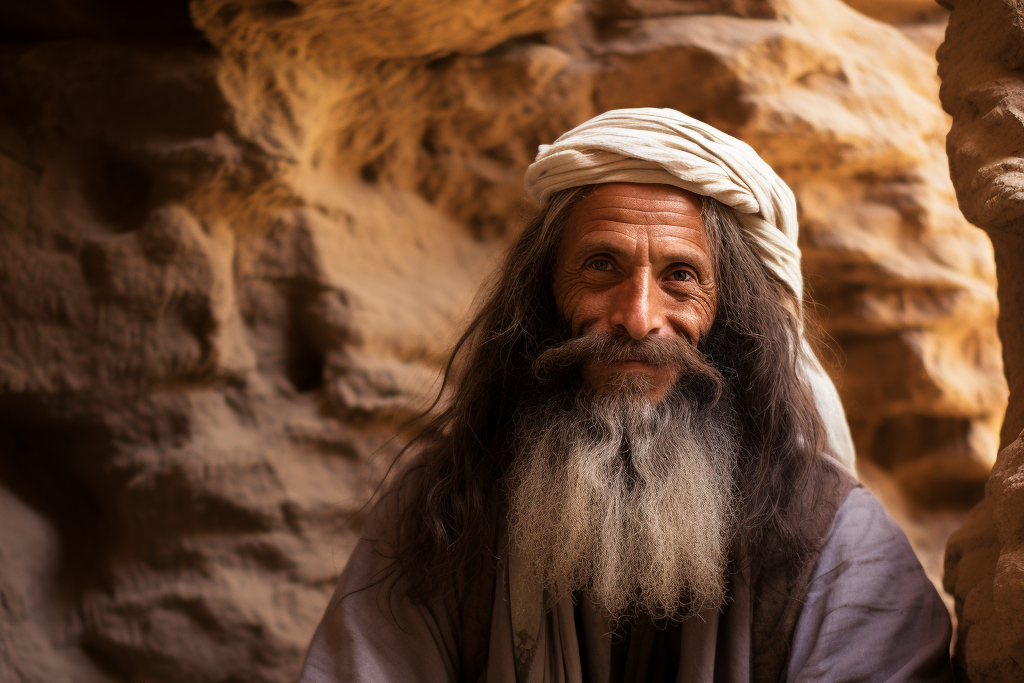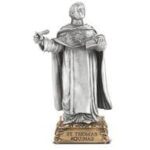
St. Paul the Hermit
Saint Paul the Hermit
When They Lived:
St. Paul the Hermit, also known as Paul of Thebes, is believed to have lived during the 3rd century AD. He is often considered one of the earliest Christian hermits and ascetics, making his life a remarkable example of early Christian spirituality.
Where They Lived:
St. Paul the Hermit’s ascetic journey led him to the deserts of Egypt. Specifically, he is renowned for his life of solitude and contemplation in the region now known as the Eastern Desert, near the Red Sea. His choice of a remote and arid landscape for his hermitage is an intriguing aspect of his story.
Notable World Events During the Time of Their Life:
- Diocletian’s Persecution (303-313 AD): St. Paul the Hermit lived during the era of the Diocletianic Persecution, one of the most severe persecutions of Christians in the Roman Empire. His decision to withdraw from society into the desert can be seen as a response to this threat to Christian faith.
- Rise of Christian Monasticism: St. Paul’s life coincided with the emergence of Christian monasticism. He is considered one of the pioneers of this movement, and his choice to live as a hermit significantly influenced the development of monasticism in Egypt and beyond.
- Roman Emperor Constantine’s Conversion (312 AD): During his lifetime, St. Paul witnessed the momentous conversion of the Roman Emperor Constantine to Christianity. This event marked a significant turning point in the history of Christianity, as it led to the eventual legalization and later official adoption of Christianity as the state religion.
- Antony the Great’s Asceticism (c. 251-356 AD): St. Paul was a contemporary of another famous desert hermit, Antony the Great. Their lives in solitude and their eventual meeting in the desert are part of Christian hagiography and illustrate the rise of asceticism in Egypt.
- Emergence of Desert Fathers and Mothers: St. Paul’s era saw the emergence of numerous Desert Fathers and Mothers who sought spiritual growth through solitude and asceticism. These individuals played a vital role in shaping early Christian theology and monastic traditions.
Their Patronage:
St. Paul the Hermit is considered the patron saint of hermits, ascetics, and all those who seek a life of solitude and contemplation. His enduring legacy lies not only in his own pursuit of a solitary life but also in his influence on the development of Christian monasticism. His example continues to inspire those who are drawn to a life of prayer, meditation, and spiritual reflection, even in the bustling modern world.
Early Life
Saint Paul the Hermit, also called Paul of Thebes, was born around 227 A.D. He was born in Egypt, in the region of Thebaid. The names of Saint Paul’s parents and siblings are unknown, but it is recorded that he had a married sister.
At the age of 15, Saint Paul and his sister were orphaned and received some of their parents possessions.
In the year 250, Roman Emperor Traianus Decius began to persecute Christians. Saint Paul was a devout Christian and felt threatened by the Emperor. In a bid to escape Decius, Saint Paul the Hermit went into hiding in a friend’s house.
Fearing that his sister’s husband was going to sell him out to the Emperor, Saint Paul left his hiding spot and instead took to the safety of the wilderness.
Dedication and Devotion
Saint Paul the Hermit lived in a cave in the Egyptian desert, where he spent most of his time praying. He had planned to return home after the troubles had ended, but he got used to living in solitude and instead spent the rest of his life alone.
For the majority of the time he spent in the wilderness, he was provided with water from a spring that ran in the desert, and a palm tree provided him with food and clothing. He made his clothes out of the leaves of the trees.
This went on until he reached the age of 43. After that, a raven started to bring him bread for food every day.

When Saint Paul turned 90, his presence in the wilderness was shown to St. Anthony the Great. Saint Anthony had a vision in which he saw Saint Paul and spent a year trying to find him.
Anthony finally found Saint Paul in his 113th year, in 342 AD. He met him in the cave, and they became fast friends. They dined on the bread the raven brought and prayed together.
While Saint Anthony was convinced that he had just found a new friend,Saint Paul knew that God sent him Anthony to help him die. He told Anthony this, and Anthony wept bitterly.
Saint Paul the Hermit requested the cloak that Athanasius had gifted Anthony and asked that his body be wrapped up and buried in it. While Anthony left to get the cloak, Saint Paul the Hermit passed away peacefully.
Death and Canonization
Saint Paul the Hermit died in 342 A.D. His grave was dug by two lions, and Saint Anthony laid him to rest. When Saint Anthony left the wilderness, he took with him the clothes made from woven leaves that Saint Paul always wore.
Saint Paul was canonized Pre-congregationally. He is commemorated in the Coptic and Armenian rites of the Mass.
He is described as the patron saint of hermits, weavers, and the clothing industry.
Saint Paul the Hermit is celebrated every year by the Catholic Church on the 15th of January in the West and by Orthodox Catholic Churches. The Oriental Orthodox Churches celebrate him on the 9th of February.
5 Interesting Facts About St. Paul the Hermit
- Did you know that Saint Anthony described Saint Paul the Hermit as
the first monk and the Father of Monasticism? - Did you know that Saint Paul is believed to be buried on the site of
the cave where he lived? It is believed that the Monastery of
Saint Paul the Anchorite, which is located in the eastern desert,
mountains of Egypt near the Red Sea are where he spent most of his
life. - Did you know that Saint Anthony wore Saint Paul the Hermit’s woven
clothes? He so treasured the Saint that he wore the garment on the
feast days of Easter and Pentecost. - Did you know that Saint Paul is the patron saint of the Diocese of
San Pablo in the Philippines? He is also a titular member of the
Cathedral. - Did you know that Saint Paul grew up in an influential family? He
was well educated and fluent in Greek.
Prayer to St. Paul the Hermit
Father and Prince of Hermits! Thou art now contemplating in all his glory that God, whose weakness and lowliness thou didst study and imitate during the sixty years of thy desert life; thou art now with him in the eternal union of the Vision. Instead of thy cavern, where thou didst spend thy life of unknown penance, thou hast the immensity of the heavens for thy dwelling; instead of thy tunic of palm leaves, thou hast the robe of light; instead of the pittance of material bread, thou hast the Bread of eternal life; instead of thy humble fountain, thou hast the waters that spring up to eternity, filling thy soul with infinite delights. Thou didst imitate the silence of the Babe of Bethlehem by thy holy life of seclusion; now, thy tongue is forever singing the praises of this God, and the music of infinite bliss is forever falling on thine ear. Thou didst not know this world of ours, save by its deserts; but now, thou mustst be compassionate and pray for us who live in it; speak for us to our dear Jesus; remind Him how He visited it in wonderful mercy and love; pray his sweet blessing upon us, and the graces of perfect detachment from transitory things, love of poverty, love of prayer, and love of our heavenly country. Amen.
Source:[http://www.catholicharboroffaithandmorals.com/St.%20Paul%20First%20Hermit.html]{.ul}



